
Chong Kim
There are an estimated 403,000 people living in modern slavery in the United States (GSI 2018). Sex trafficking exists throughout the country. Traffickers use violence, threats, lies, debt bondage and other forms of coercion to compel adults and children to engage in commercial sex acts against their will. The situations that sex trafficking victims face vary, many victims become romantically involved with someone who then forces them into prostitution. Others are lured with false promises of a job, and some are forced to sell sex by members of their own families. Victims of sex trafficking include both foreign nationals and US citizens, with women making up the majority of those trafficked for the purposes of commercial sexual exploitation. In 2015, the most reported venues/industries for sex trafficking included commercial-front brothels, hotel/motel-based trafficking, online advertisements with unknown locations, residential brothels, and street-based sex trafficking. Chong Kim’s family moved to the United States from South Korea when she was a toddler. At the age of 19 Kim met a man on a night out in Dallas, Texas whom she began dating. After a few weeks of dating, this man abducted Chong Kim and destroyed her naturalization documents. She was forced into prostitution, sent out with other women to a variety of places across the country. After a year and a half Kim was able to escape while working a casino in Las Vegas, befriending people on the maintenance staff who helped her escape.
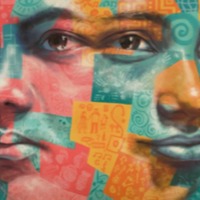
Natasha Herzig
There are an estimated 403,000 people living in modern slavery in the United States (GSI 2018). Sex trafficking exists throughout the country. Traffickers use violence, threats, lies, debt bondage and other forms of coercion to compel adults and children to engage in commercial sex acts against their will. The situations that sex trafficking victims face vary, many victims become romantically involved with someone who then forces them into prostitution. Others are lured with false promises of a job, and some are forced to sell sex by members of their own families. Victims of sex trafficking include both foreign nationals and US citizens, with women making up the majority of those trafficked for the purposes of commercial sexual exploitation. In 2015, the most reported venues/industries for sex trafficking included commercial-front brothels, hotel/motel-based trafficking, online advertisements with unknown locations, residential brothels, and street-based sex trafficking. Natasha was at the mall when a woman offered her a job in the modelling industry. She went to an office building to fill out an application and met the owner of the company. However rather than being given a job, she was kidnapped and forced into prostitution. Natasha was subjected to physical and sexual abuse daily. Natasha tells of the psychological effects of her trafficking and how she is now working towards preventing what happened to her happening ton anyone else.
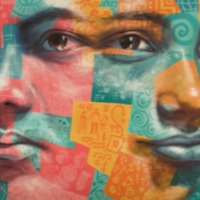
S.
There are an estimated 20,000 people living in conditions of modern slavery in Albania (GSI 2018). An estimated 10% of girls in Albania are married before their eighteenth birthday, with child marriage most common among the Roma ethnic group and in poor, isolated and rural areas. Child marriage is driven by gender inequality and while country has committed to eliminate child, early and forced marriage by 2030 in line with target 5.3 of the UN Sustainable development goals, no progress has been reported thus far. Human traffickers also exploit domestic and foreign victims in Albania, and traffickers exploit victims from Albania abroad. Traffickers exploit Albanian women and children in sex trafficking and forced labor within the country, especially during tourist season. Traffickers use false promises such as marriage or employment offers to force victims into sex trafficking. Traffickers exploit Albanian victims in sex trafficking in countries across Europe, particularly Kosovo, Greece, Italy, Belgium, Germany, Switzerland, North Macedonia, Norway, the Netherlands, and the UK. Albanian migrants who seek employment in Western Europe face forced labor and forced criminality, particularly in the UK. S was born in Albania to a poor family who forced her to marry someone living in Greece at the age of 14. S moved to Greece with her husband illegally, subjected to emotional and physical abuse daily. After a year, S escaped her marriage and was deported back to Albania, however after giving birth to her daughter, Sara, S’s father forced her into another marriage with a 60-year-old man. S escaped this second forced marriage with the help of her father’s friend she had known since she was ten years old. This man, however, attempted to traffik S into prostitution in Italy. She was caught by police on a boat and referred to a safe place back in Albania.
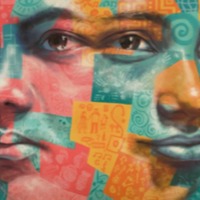
P.
There are an estimated 23,000 people in modern slavery in Belgium (GSI 2018). People are subjected to sex and labour trafficking in the country, with foreign-born people coming primarily from Asia, Eastern Europe, North and Sub-Saharan Africa. Labour traffickers exploit men in restaurants, bars, sweatshops, horticulture, fruit farms, construction, cleaning businesses and retail shops, they also exploit foreign workers in domestic servitude. Sex trafficker exploit Belgian girls, some of whom recruited by local pimps, and foreign children, including Roma. Forced begging within the Romani community in Belgium also occurs, while asylum seekers often have their applications for legal status denied, increasing their vulnerability to trafficking. P was in high school when she fell in love with a boy who convinced her to go to Belgium with him. Upon arrival, he became abusive and trafficked P for six months across the country. P was finally able to escape and find shelter with people who helped her return to Albania.
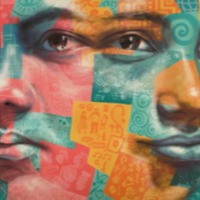
M.
There are an estimated 23,000 people in modern slavery in Belgium (GSI 2018). People are subjected to sex and labour trafficking in the country, with foreign-born people coming primarily from Asia, Eastern Europe, North and Sub-Saharan Africa. Labour traffickers exploit men in restaurants, bars, sweatshops, horticulture, fruit farms, construction, cleaning businesses and retail shops, they also exploit foreign workers in domestic servitude. Sex trafficker exploit Belgian girls, some of whom recruited by local pimps, and foreign children, including Roma. Forced begging within the Romani community in Belgium also occurs, while asylum seekers often have their applications for legal status denied, increasing their vulnerability to trafficking. M was walking to a friend’s house when she was abducted and taken to a house in Vlore where other girls were being kept. After being held there for two weeks, M was smuggled by boat to Italy and then on to Paris by train and then on again to Brussels. Upon arrival, M was forced into prostitution, subjected to physical and sexual abuse daily. One night, M was rescued by police who referred her to a shelter who are assisting M in reuniting with her family.
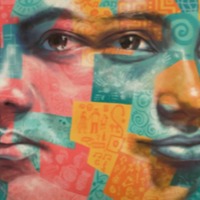
O.
There are an estimated 145,000 people living in conditions of modern slavery in Italy (GSI 2018). Italy is a destination, transit, and source country for women, children, and men subjected to sex trafficking and forced labour. Victims originate from Nigeria, Romania, Morocco, China, and other countries. Female victims are often subjected to sex trafficking in Italy after accepting promises of employment as dancers, singers, models, restaurant servers, or caregivers. Romanian and Albanian criminal groups force Eastern European women and girls into commercial sex. O.’s was forced to marry a man she did not know when she was 14-years old and move to Greece to live with her ‘husband’. She was subjected to physical abuse daily and left after 3 weeks. A neighbour promised to find her a job in Italy, where she travelled to illegally by boat. However, upon arrival she was forced into prostitution, beaten daily until she agreed to work on the streets. O. was able to leave her situation when the police caught her and took her to a centre for minors, where she stayed for a year and a half.
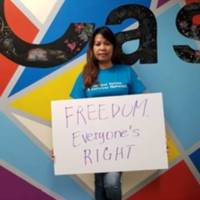
Angela (Narrative 3)
There are an estimated 403,000 people living in conditions of modern slavery in the United States (GSI 2018). The US attracts migrants and refugees who are particularly at risk of vulnerability to human trafficking. Trafficking victims often responding to fraudulent offers of employment in the US migrate willingly and are subsequently subjected to conditions of involuntary servitude in industries such as forced labour and commercial sexual exploitation. Angela Guanzon was living in the Philippines facing the choice of forced marriage or unemployment when she was recruited as a health care worker in California. Upon arrival, Angela was told she owed the recruiter $12,000 and would have to work for 10 years to pay off the debt. She was forced to work long hours on little sleep and received limited food. She was finally able to escape her exploitation when a neighbour recognised the signs of labor trafficking and contacted the FBI. Angela now works with anti-trafficking charities including CAST-LA to educate people on human trafficking.
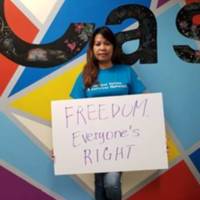
Angela (Narrative 2)
There are an estimated 403,000 people living in conditions of modern slavery in the United States (GSI 2018). The US attracts migrants and refugees who are particularly at risk of vulnerability to human trafficking. Trafficking victims often responding to fraudulent offers of employment in the US migrate willingly and are subsequently subjected to conditions of involuntary servitude in industries such as forced labour and commercial sexual exploitation. Angela Guanzon was facing the prospect of being forced into marriage or being jobless in the Philippines, leading her to seek out work abroad. She thought all her problems had been solved when she in 2005 was recruited for a health care job in California. However, upon arrival her trafficker demanded $12,000 for the ‘opportunity. Her passport was seized, and they threatened to call the police and tell them Angela had stolen something if she ran away. Guanzon was ordered to work for 10 years to pay off the debt at $300 a month. Angela was forced to work 18-hour days and sleep on the hallway floor of an elder care facility in Long Beach. Her exploitation finally ended after a neighbour noticed the signs of labour trafficking and contacted the FBI.
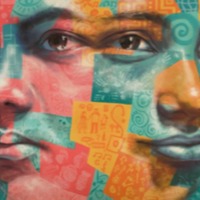
Witness B
There are an estimated 136,000 people living on conditions of modern slavery in the United Kingdom (Global Slavery Index 2018). According to the 2017 annual figures provided by the National Crime Agency, 5, 145 potential victims of modern slavery were referred through the National Referral Mechanism in 2017, of whom 2,454 were female, 2688 were male and 3 were transgender, with 41% of all referrals being children at the time of exploitation. People are subjected to slavery in the UK in the form of domestic servitude, labour exploitation, organ harvesting and sexual exploitation, with the largest number of potential victims originating from Albania, China, Vietnam and Nigeria. This data however does not consider the unknown numbers of victims that are not reported. Witness B was brought to the United Kingdom by her employer to work as a domestic worker to support her family. Upon arrival, Witness B was not fed, was subjected to physical abuse and was not paid for their work. After 12 weeks she ran away, scared for her life. Though Witness B was helped by a charity organisation under the National Referral Mechanism, she was still unable to work in the UK and provide for her family. Witness B tells of her experience of the current support system in place in the UK for human trafficking survivors, believing it inadequate for trafficked domestic workers such as herself.
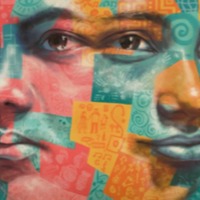
Joanna
There are an estimated 403,000 people living in modern slavery in the United States (GSI 2018). Sex trafficking exists throughout the country. Traffickers use violence, threats, lies, debt bondage and other forms of coercion to compel adults and children to engage in commercial sex acts against their will. The situations that sex trafficking victims face vary, many victims become romantically involved with someone who then forces them into prostitution. Others are lured with false promises of a job, and some are forced to sell sex by members of their own families. Victims of sex trafficking include both foreign nationals and US citizens, with women making up the majority of those trafficked for the purposes of commercial sexual exploitation. In 2015, the most reported venues/industries for sex trafficking included commercial-front brothels, hotel/motel-based trafficking, online advertisements with unknown locations, residential brothels, and street-based sex trafficking. Joanna was born in a small town in Europe/ When she was 18 she met a man who said he wanted to marry her. They began seeing each other and Joanna became pregnant. Her boyfriend took Joanna to the United States where their child was born. Unable to read, Joanna was told to sign a piece of paper at the hospital and never saw her child again. She was taken to an apartment building where other young girls like her were being kept. Joanna was forced to provide sexual services, raped multiple times a day. She was finally able to escape one day when she became ill.
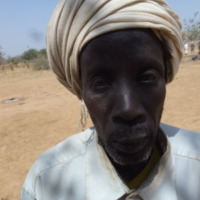
Adup Aguer Deng
There are an estimated 465,000 people living in modern slavery in Sudan (GSI 2018). Between 1983 and 2005, the central government of Sudan enslaved tens of thousands of black South Sudanese Christian and traditionalist people. It was part of a genocidal war against South Sudan, with a simple aim: to force South Sudan to become Arab and Muslim. Adup Aguer Deng was captured in 1998 after being found hiding in a forest amidst fighting between the SPLA and Arabs. After being walked to northern Sudan she was forced to work on a farm and convert to Islam. Adup was finally freed in 2016.
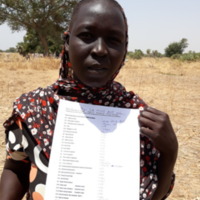
Dhan Deng Bol
There are an estimated 465,000 people living in modern slavery in Sudan (GSI 2018). Between 1983 and 2005, the central government of Sudan enslaved tens of thousands of black South Sudanese Christian and traditionalist people. It was part of a genocidal war against South Sudan, with a simple aim: to force South Sudan to become Arab and Muslim. Dhan Deng Bol was abducted in 1998. She tells of her experience that ended in those captured being divided amongst their kidnappers and forced into domestic service.
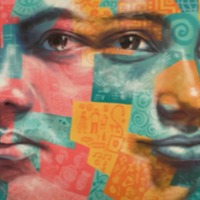
Ram
There are an estimated 610,000 people living in conditions of modern slavery in Thailand (GSI 2018). The country is a source, destination and transit country for men, women and children subjected to forced labour and sex trafficking. Thailand’s commercial sex indusrty remains vast, increasing vulnerabilities for sex trafficking. Children are victims of sex trafficking in brothels, massage parlours, bars, karaoke lounges, hotels and private residences. People are trafficked from other Southeast Asian countries, Sri Lanka, Russia, Uzbekistan and some African countries. It is also a transit country for people from China, North Korea, Bangladesh, India and Burma. Ram ran away from an abusive home and was forced to live on the streets. One day while stealing food from a local market, Ram was kidnapped by a street gang. Ram was forced to steal from tourists during the day and at night was sold for sex to older men. Ram’s exploitation finally came to an end when his trafficker was arrested.
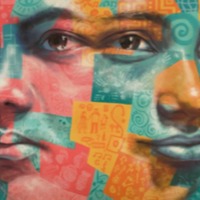
Ratree
There are an estimated 610,000 people living in conditions of modern slavery in Thailand (GSI 2018). The country is a source, destination and transit country for men, women and children subjected to forced labour and sex trafficking. Thailand’s commercial sex indusrty remains vast, increasing vulnerabilities for sex trafficking. Children are victims of sex trafficking in brothels, massage parlours, bars, karaoke lounges, hotels and private residences. People are trafficked from other Southeast Asian countries, Sri Lanka, Russia, Uzbekistan and some African countries. It is also a transit country for people from China, North Korea, Bangladesh, India and Burma. Ratree left her home village in Thailand at the age of 13 to look for work. She found a job working for a woman in a hotel, however the work turned out to be not how she had imagined. Ratree was forced to have sex with older men, subjected to sexual violence and rape daily. Ratree’s exploitation was finally ended when undercover police performed a raid on the hotel.
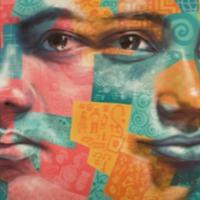
Sophie B
There are an estimated 145,000 people living in modern slavery in Italy (GSI 2018). Italy is a destination, transit and source country for men, women and children subjected to sex trafficking and forced labour. Victims originate most often from Nigeria and other African countries, China, and Eastern Europe, and include ethnic Roma. Nigerians represented 36 percent of the victims who received residency permits in 2017, primarily women and girls subjected to sex trafficking through debt bondage and many coerced under threat of voodoo rituals. Men are victims of forced labour in agriculture in southern Italy and in construction, house cleaning, hotels, and restaurants in the north. Chinese victims work in textile factories in Milan, Prato, Rome, and Naples. Nigerian gangs have expanded and reportedly receive protection from Italian crime networks. Chinese criminal elements also forced victims to work in apartments and in massage parlours. Sophie was just 24 when she travelled from Leeds to Italy to be with the man she believed was her best friend and boyfriend. She thought she was just going on a week’s holiday. Instead, she vanished for six months. Her boyfriend had tricked her, forcing her to begin working as a prostitute to earn money for him. He bullied her, beat her, and pressured her to have sex with strangers. Sophie, an alias, became what she never imagined she would. After six months, Sophie managed to escape and she now runs a survivor support programme for women in England who have been identified as having been trafficked.

Wendy
There are an estimated 403,000 people living in modern slavery in the United States (GSI 2018). Sex trafficking exists throughout the country. Traffickers use violence, threats, lies, debt bondage and other forms of coercion to compel adults and children to engage in commercial sex acts against their will. The situations that sex trafficking victims face vary, many victims become romantically involved with someone who then forces them into prostitution. Others are lured with false promises of a job, and some are forced to sell sex by members of their own families. Victims of sex trafficking include both foreign nationals and US citizens, with women making up the majority of those trafficked for the purposes of commercial sexual exploitation. In 2015, the most reported venues/industries for sex trafficking included commercial-front brothels, hotel/motel-based trafficking, online advertisements with unknown locations, residential brothels, and street-based sex trafficking. Wendy Barnes was trafficked from the age of 15 across the US West Coast for nearly 15 years, from the mid 1980s until 2000. Her trafficker, Gregory Leon Hightower, was eventually arrested and sentenced to life in prison in Oregon. Wendy now lives in Southern California and works full time as a customer service representative. Her narrative is from an interview with Francine Sporenda for the Révolution Féministe website, originally published in French and then in English by Nordic Model Now!, a UK secular, feminist, grassroots women’s group campaigning for the abolition of prostitution and related practices. Wendy has published a book about her experiences titled And Life Continues: Sex Trafficking and My Journey to Freedom (2015).
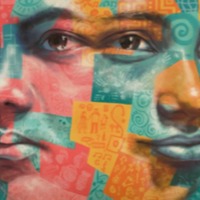
Miguel
There are an estimated 403,000 people living in conditions of modern slavery in the United States (GSI 2018). The US attracts migrants and refugees who are particularly at risk of vulnerability to human trafficking. Trafficking victims often responding to fraudulent offers of employment in the US migrate willingly and are subsequently subjected to conditions of involuntary servitude in industries such as forced labour and commercial sexual exploitation. Miguel travelled from Mexico to the United States in search of work to support his family, including his sick son. Miguel along with five others paid for assistance to cross the boarder to the US and on to Florida where they were met by their ‘boss’ who informed them they would work to pay off their debts. Miguel tells of how he was forced to work under constant threats for little pay.
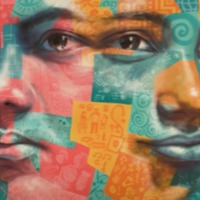
IR
There are an estimated 10,000 people living in modern slavery in Hong Kong (GSI 2018). Approximately 370,000 foreign domestic workers, primarily from Indonesia and the Philippines, work in Hong Kong; some become victims of forced labour in the private homes in which they are employed. An NGO report released in 2016 estimated as many as one in six foreign domestic workers is a victim of labour exploitation. Employment agencies often charge job placement fees in excess of legal limits, and sometimes withhold identity documents, which may lead to situations of debt bondage of workers in Hong Kong. The accumulated debts sometimes amount to a significant portion of the worker’s first year salary. Some employers or employment agencies illegally withhold passports, employment contracts, or other possessions until the debt is paid. Some workers are required to work up to 17 hours per day, experience verbal, sexual or physical abuse in the home, and/or are not granted a legally required weekly day off. IR, a 29-year-old woman from Ponorogo (2009-2011), was trafficked to Hong Kong and deceived by her broker.
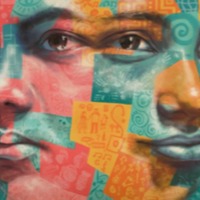
Jane Kohut
There are an estimated 5,000 people living in modern slavery in Slovenia (GSI 2018). Slovenia is a destination, transit, and, to a lesser extent, a source country for women and children subjected to sex trafficking and for men, women, and children subjected to forced labour and forced begging. Women and children from Slovenia, Eastern European and Western Balkan countries, and the Dominican Republic are subjected to sex trafficking within the country, and many also transit to Western Europe where they may face sexual and labour exploitation. Ethnic Roma are particularly vulnerable to trafficking in Slovenia. Jane Kohut was 25 when she was forced into prostitution.
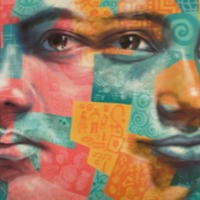
Grace
There are an estimated 1,386,000 people living in modern slavery in Nigeria (GSI 2018). Nigeria is a source, transit, and destination country for women and children subjected to forced labour and sex trafficking, and a source country for men subjected to forced labour. Nigerian women and girls are subjected to sex trafficking within Nigeria and throughout Europe, including in Italy, Spain, Austria, and Russia. In 2015, a foreign government reported that with the exception of internal trafficking within the EU, Nigerian nationals are the most common trafficking victims in the EU. Before departure for work abroad, many Nigerian women participate in a traditional ceremony with a juju priest; some traffickers exploit this tradition and tell the women they must obey their traffickers or a curse will harm them, which prevents victims from seeking assistance or cooperating with law enforcement. While some sex trafficking victims arrive in Europe believing they will be working in prostitution, traffickers coerce them to stay in prostitution by changing the working conditions and increasing victims’ travel debts. Grace* was promised work as a cleaner in the UK by a local businesswoman who trafficked her and forced her into prostitution.